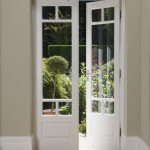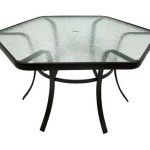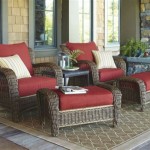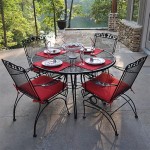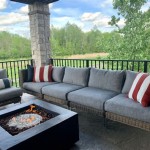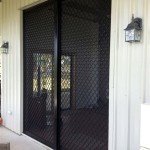Bringing Shade and Comfort to Your Patios
Patios represent an extension of the indoor living space, offering a valuable outdoor area for relaxation, entertainment, and dining. However, the full potential of a patio is often limited by exposure to the elements, particularly intense sunlight and heat. Effective shade solutions are essential for transforming a patio into a comfortable and usable space throughout the year. This article explores various strategies for adding shade and comfort to patios, enhancing their functionality and appeal.
Understanding the Need for Patio Shade
Unprotected patios can become virtually unusable during peak sunlight hours, especially in warmer climates. Direct sun exposure can lead to uncomfortable temperatures, faded furniture, and increased glare, making it difficult to enjoy the outdoor space. Effective shade solutions mitigate these issues by reducing direct sunlight, lowering the overall temperature, and creating a more inviting atmosphere. Choosing the right shade solution depends on several factors, including the patio's orientation, size, desired aesthetic, and budget.
Beyond comfort, shade solutions offer health benefits. Prolonged exposure to direct sunlight can increase the risk of sunburn and skin damage. Shaded patios encourage outdoor activity without the harmful effects of ultraviolet (UV) radiation. Furthermore, shaded areas can help reduce energy consumption by lowering indoor temperatures and decreasing the reliance on air conditioning.
Exploring Shade Structure Options
A wide range of shade structures are available, each with its own advantages and disadvantages. The best choice depends on individual needs and preferences. Common options include awnings, pergolas, shade sails, umbrellas, and retractable canopies.
Awnings: Awnings are permanent or retractable structures attached to the building, providing shade over a specific area. Retractable awnings offer flexibility, allowing users to adjust the amount of shade as needed. Awnings are typically made from durable fabrics that resist fading and water damage. They are a good option for patios adjacent to the house, offering a seamless transition from indoor to outdoor space. The installation of awnings often requires professional assistance to ensure proper attachment and functionality.
Pergolas: Pergolas are freestanding structures consisting of posts and beams, often with an open lattice roof. While pergolas offer partial shade, they can be enhanced with climbing plants or fabric covers for more complete sun protection. Pergolas create a defined outdoor space and can add architectural interest to the patio area. They can be constructed from various materials, including wood, metal, and vinyl. The cost of a pergola varies depending on the size, materials, and complexity of the design.
Shade Sails: Shade sails are fabric canopies suspended between multiple anchor points, creating a visually appealing and functional shade solution. They come in a variety of shapes, sizes, and colors, allowing for customization and creative design. Shade sails are relatively easy to install and can be a cost-effective option for providing shade over a large area. The effectiveness of shade sails depends on the direction of the sun and the positioning of the sails. Proper tensioning is crucial to prevent sagging and ensure optimal performance.
Umbrellas: Patio umbrellas are a versatile and portable shade solution, offering flexibility and ease of use. They are available in various sizes and styles, including freestanding umbrellas and those that attach to patio tables. Umbrellas are a good option for smaller patios or areas where a permanent shade structure is not feasible. The stability of an umbrella is important, especially in windy conditions. Weighted bases or table attachments are recommended to prevent tipping.
Retractable Canopies: Retractable canopies offer the best of both worlds, providing adjustable shade and protection from the elements. They can be opened and closed manually or with a motorized system, allowing users to control the amount of sunlight exposure. Retractable canopies are typically made from durable, weather-resistant fabrics and can be customized to fit specific patio dimensions. Installation may require professional assistance, depending on the complexity of the system.
Landscaping for Natural Shade
In addition to shade structures, landscaping can play a significant role in providing natural shade and enhancing the comfort of a patio. Trees, shrubs, and vines can create a cooling effect and add visual appeal to the outdoor space. Strategic planting can block direct sunlight, reduce glare, and create a more pleasant environment.
Trees: Deciduous trees are an excellent choice for providing shade in the summer and allowing sunlight to penetrate in the winter. The selection of tree species should consider the size of the patio, the growth rate of the tree, and the desired level of shade. Trees with dense canopies offer the most effective shade, while those with open canopies allow for dappled sunlight. Proper tree care is essential for maintaining their health and ensuring optimal shade coverage.
Shrubs: Shrubs can be used to create hedges or screens that block sunlight and provide privacy. They are a good option for smaller patios or areas where trees are not feasible. Evergreen shrubs offer year-round shade and privacy, while deciduous shrubs provide seasonal shade. The selection of shrub species should consider the climate, soil conditions, and desired aesthetic.
Vines: Climbing vines can be trained to grow on pergolas, trellises, or fences, providing a natural shade solution. Vines can add visual interest to the patio area and attract pollinators. Deciduous vines offer shade in the summer and allow sunlight to penetrate in the winter. The selection of vine species should consider the support structure, the climate, and the desired level of shade. Regular pruning is necessary to maintain the shape and size of the vines.
Material Considerations for Shade Structures
The materials used in shade structures significantly impact their durability, aesthetics, and performance. Choosing the right materials is crucial for ensuring long-lasting shade and comfort.
Wood: Wood is a popular choice for pergolas and other shade structures, offering a natural and warm aesthetic. However, wood requires regular maintenance to prevent rot, decay, and insect damage. Pressure-treated wood is more resistant to these issues but may still require staining or painting. Redwood and cedar are naturally durable wood species that are well-suited for outdoor use.
Metal: Metal is a strong and durable material that requires minimal maintenance. Aluminum and steel are common choices for shade structures, offering resistance to rust and corrosion. Metal structures can be powder-coated to match the patio decor and provide added protection. Metal can become hot in direct sunlight, so it is important to consider the potential for heat transfer.
Fabric: Fabric is used for awnings, shade sails, and retractable canopies, providing flexible and lightweight shade solutions. The selection of fabric should consider its resistance to fading, water damage, and mildew. Acrylic fabrics are a popular choice for awnings, offering excellent durability and color retention. Shade sail fabrics are typically made from high-density polyethylene (HDPE), which is strong, UV-resistant, and breathable.
Enhancing Patio Comfort Beyond Shade
While shade is a crucial element of patio comfort, other factors can further enhance the outdoor experience. Proper ventilation, comfortable seating, and ambient lighting can transform a patio into a relaxing and inviting space.
Ventilation: Adequate ventilation is essential for preventing stagnant air and reducing humidity. Fans can be used to circulate air and create a cooling breeze. Ceiling fans are a good option for covered patios, while portable fans can be used in open areas. Proper ventilation can also help to deter insects, making the patio more enjoyable.
Seating: Comfortable seating is essential for creating a relaxing patio environment. Choose furniture that is appropriate for outdoor use and resistant to the elements. Cushions and pillows can add comfort and style to the seating arrangement. Consider the size and layout of the patio when selecting furniture to ensure adequate space for movement.
Lighting: Ambient lighting can create a warm and inviting atmosphere on the patio. String lights, lanterns, and spotlights can be used to illuminate the space and highlight architectural features. Solar-powered lights are a convenient and energy-efficient option. Consider the placement of lights to avoid glare and create a comfortable level of illumination.
By carefully considering these factors, homeowners can create a patio that is both comfortable and aesthetically pleasing. The addition of shade, combined with thoughtful landscaping and comfortable furnishings, can transform an outdoor space into a true extension of the home.

Discover The Perfect Shade Tarp For Your Patio Ultimate Guide Tongyuan

How To Create A Cozy Outdoor Living Room On Your Patio Opple House

Cool Comfort Mastering Shade In Your Desert Landscape

How To Keep A Patio Cool Beat The Heat

What Patio Cover Contractors Want You To Know Before Build A Nation Of Moms

Inspiring Project With Covered Patio Ideas For Your Backyard

Eyesore To Outdoor Oasis Backyard Patio Reveal Sima Spaces

Elevate Your Outdoor Space With These Patio Cover Options Portland Monthly

8 Ways To Make Your Backyard Look More Expensive Without Spending A Fortune Bright Side

8 Keys To The Perfect Patio Furniture Arrangement
Related Posts

